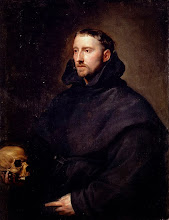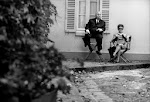
Synecdoche, New York is a 2008 American film written and directed by Charlie Kaufman. It premiered in competition at the 61st Annual Cannes Film Festival on May 23, 2008 and went into limited theatrical release in the U.S. on October 24, 2008.
The film marks the directorial debut of Kaufman, who is known for his screenplays for the reality-bending films Being John Malkovich, Eternal Sunshine of the Spotless Mind, Adaptation., and Human Nature.
Caden Cotard, a theatre director producing a version of Death of a Salesman in which he casts young actors in the roles of Willy and Linda Loman, finds his life unraveling. Suffering from numerous physical ailments, he is depressed and alienated from his wife Adele and is having an unconsummated flirtation with Hazel, the woman who works in the box office. His nadir is reached when Adele leaves him for a new life in Berlin, taking their daughter Olive with her.
At this point, Caden unexpectedly receives a MacArthur genius grant that gives him unlimited wealth to pursue his artistic interests. He is determined to use the money to create a piece of brutal realism and honesty, something into which he can pour his whole self. Gathering an ensemble cast into a large warehouse in Manhattan's theater district, he directs them in a celebration of the mundane, instructing each to live out their constructed lives. As the mockup inside the warehouse grows increasingly mimetic of the city outside, Caden continues to look for solutions to his personal crises. He is traumatized as Adele becomes a celebrated painter in Berlin, and Olive grows up under the questionable guidance of Adele's friend, Maria. Caden marries Claire, an actress in his cast, but their relationship fails to work and he continues an emotionally awkward relationship with Hazel. Meanwhile, a mysterious condition is systematically shutting down Caden's autonomic functions one by one. Caden's condition is symptomatic of a neuropsychiatric disorder called the Cotard delusion, which is almost certainly why the protagonist was given the name Caden Cotard.
As the years rapidly pass, the continually expanding warehouse is isolated from the deterioration of the city outside. Caden buries himself deeper into his masterpiece, blurring the line between the world of the play and that of his own reality by populating the cast and crew with doppelgängers. For instance, Sammy Barnathan is cast in the role of Caden in the play after Sammy reveals that he has been obsessively following Caden for twenty years. Sammy's own interest in Hazel sparks a revival of Caden's relationship with her.
As he pushes the limits of his relationships, both personally and professionally, Caden finds change by letting an actress take over his role as director while he plays her previous job as Adele's cleaning lady. He lives out his days under the replacement director's instruction, finally preparing for death as he rests his head on the shoulder of an actress in the play, seemingly the only person left alive in the warehouse. As the scene fades to white, Caden says that he has an idea for how to finish the play when the director's voice in his ear gives him his final cue: "Die."
The film is meta-referential in that it portrays a play within a play. The film title is a play on Schenectady, New York, where some of the film is set. Synecdoche itself is a figure of speech that applies to the meta-reference.
This theme has been compared to the famous quote by William Shakespeare, "All the world’s a stage, and all the men and women merely players."
It has also been compared to the music video for Icelandic singer Björk's song Bachelorette. The music video portrays a woman who finds an autobiographical book about her which writes itself. The book is then adapted into a play, which features a play within itself. The music video was directed by Michel Gondry, who has worked with Kaufman before. In an interview Kaufman has responded to the comparison, saying "Yeah, I heard that comparison before. The reason Michel and I found each other is because we have similar sort of ideas."






















































